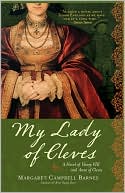I picked up 'Raven Queen' after I was looking for books to add to my ever growing Tudor collection. The book is geared toward a younger audience but I did enjoy reading it just the same.
Pauline Francis explores the idea of who Lady Jane Grey was like and what if she had a true love. It's an interesting concept since books I've read about Lady Jane Grey, she had no sweetheart. She was the type that enjoyed learning and loved her books.
So in this story, Lady Jane Grey saves a boy named Ned from hanging. Now Ned has a secret which could mean trouble when he enters the service of the Grey family. Of course Lady Jane Grey's father wasn't too keen on having some unknown person on his grounds but Jane was able to find Ned work with the woodsman.
I've read other books of Jane Grey and the common theme was the beatings that she received. In this book, it's not as graphic but you do get the sense that her parents beat her to submission. One thing I didn't like was how Jane treated her younger sister Mary. I've associated Jane as a kind, gentle person, even hardheaded but never cruel to her younger sister.
Ned on the other hand, you start to understand his secret. Your suspicions are confirmed when Alymer (Jane's professor) confirms Ned's true religion. Alymer wants Ned to tell Jane but Ned keeps it from her because religion would drive them apart.
It's nice to see Jane fall in love with Ned even though she knows that it could never be. She's a princess of the blood and her parents have hopes of her marrying King Edward VI. It's a forbidden love. Ned would want to set Jane free but Jane never takes him on his offer.
Their love falls apart when Jane discovers Ned's secret. As you would expect, she casts him out but in her heart, she still cares. As the story goes, Jane marries Guildford Dudley while Ned enters the service of Mary Tudor. As for Guildford's personality, I considered him a vain and mean person. I guess I expected more when Pauline Francis introduced him but this book was meant for a younger audience.
Mary Tudor isn't as trusting when Ned finds her because he just came from the Grey's household. By this time, he learns that Jane is a traitor queen. Still, because of Ned's faith, Mary welcomes him to her service. Towards the end, it's a sad ending for both Jane and Ned. It was a heartbreaking moment when Ned was able to visit Jane in the Tower and even more so at the end of the book.
Overall, Pauline was true to the timeline of Lady Jane Grey's life. Her time with Katherine Parr was a passing memory in this book but since the story revolves around Jane and Ned, it will be excused. I always find myself wishing that Jane's life wasn't what it was and always sad in the end. I think the younger audience would be intrigued by Lady Jane Grey's life and her nine day reign. Still, even though this was meant for a younger audience, an older audience will enjoy just the same.








